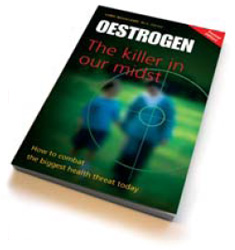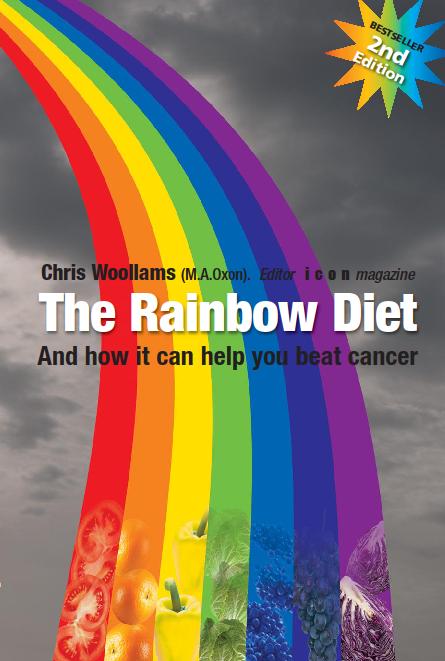RED CLOVER An ’anti-oestrogen’ to help beat breast and prostate cancers?
by David Broom MIRCH
Another vital ingredient in Nature’s Medicine Chest
Most of us are familiar with the attractive pinkish, purple flower of Red Clover (trifolium pratense). This common plant found growing wild in our fields and meadows is actually a legume belonging to the bean family. A bountiful herb and flower, it is native to Europe, central Asia and northern Africa, but is now naturalised in North America and Australia as well.
Traditional Uses
In many cultures, including traditional herbal medicine in Great Britain, clover flowers, stems and leaves have been combined with other herbs to make compound remedies for asthma, eczema, psoriasis, respiratory problems, cardiovascular disease, kidney stones and, more recently, for hormone-related cancers.
Its actions are:
Blood purifying and diuretic (helping to rid the body of excess fluid).
Anti inflammatory (due to its volatile oils)
Anti catarrhal (due to compounds which reduce airway congestion)
Antiviral (Chinese research), and
Antispasmodic, helping to relieve painful cough spasms.
Due to the many attributes of red clover it is found in many herbal decoctions and this makes it a very valuable contribution indeed to the whole of nature’s medicine chest.
One 86 people strong survey on perimenopausal women over a period of 8 months showed a significant reduction in hot flushes. At the 10th AGM of the American Menopausal Society it was reported that 50mg doses of red clover raised HDL cholesterol (the good one!) levels by an average of 28.6%. And more HDL means better heart protection.
Another trial with women receiving 80mgs of the herb, showed that there was a 23% improvement in the elasticity of their arteries. This would explain the traditional use of red clover in China and Russia for heart disease, although decades ago they would not have had the science or research tools to back up their findings.
Red Clover also contains natural tocopherol , a form of vitamin E which some researchers link to reduced risk of heart attack.
Fodder for Thought!
Red Clover has a long history of use as a nutritious cattle food, although in this article we will focus more on its medicinal benefits!
Red Clover was originally dubbed ’The herb of Hippocrates’ as it formed an important ingredient in his medical endeavours. Another early fan was Pliny who suggested taking it with wine for kidney stones and water retention.
Red Clover tea, made from the red blossoms, was an old remedy for winter colds. German Mennonites took the plant over with them to America and it is still used to help treat whooping cough, croup and to give support in some cancers. Red Clover roots have also been used to treat diphtheria.
By 1917 a book on herbs, Health from the Field and Forest, listed Red Clover as one of the very best blood purifiers, and especially for its use in cancer.
Not surprisingly by the 1930s it was a popular cancer remedy, and is today recommended by herbalists in support of the treatment for, and prevention of, breast, ovarian and lymphatic cancer.
Interestingly, one of the longest surviving ’less conventional therapies’ of recent years has its roots in a herbal formula discovered by a horse breeder. Vet John Hoxsey had a favourite stallion which developed a cancerous growth. However, this growth healed and Hoxsey noticed his stallion had grazed in a particular area of his pastures. John was convinced that the wild plants growing in that particular area had caused the stallion’s recovery and developed a formula out of grasses and wild flowers growing there. This formula included red clover.
Wild flowers and plants have been used by cultures worldwide to treat illness and confer greater immunity in the population and very often it is the animal kingdom that can provide the first clues as to the efficacy of certain plants.
John Hoxsey went on to concoct a formula made from Red Clover, Alfalfa, Buckthorne, Prickly Ash Bark and other herbs , all gathered from the area where the stallion had supposedly healed himself. He then used this ’secret’ mixture to treat horses in the area around his farm in Illinois. His reputation as the man with a healing touch brought him business from horse breeders all over Illinois and as far away as Kentucky and Indiana.
John was the grandfather of Doctor Harry Hoxsey and handed his ’special formula’ for treating horses onto his grandson, who then went on to use variations of the herbal mixtures to treat humans, especially those with particular (largely hormone-driven) cancers. Dr Harry Hoxsey met with a great deal of success and, not surprisingly, controversy, but a reporter sent to investigate him (and ruin his reputation) became a supporter of his works and wrote an article entitled ’The Quack who Cured Cancer’. You can read the full story on Hoxsey by clicking here.
Red Clover is also included in the 8 compound formula of Essiac (click here) and the CANCERactive Patron, breast cancer expert Professor Powles, initiated trials with the herb at the UK’s cancer centre, The Royal Marsden.
The Anti-oestrogen
It is likely that the wide range of benefits discovered over the centuries is partly due to Red Clover’s blood purifying properties and variety of natural plant nutrients including vitamin C, calcium, chromium, magnesium, niacin, phosphorus, potassium and thiamin. However, one of the most important ingredients in Red Clover is the Isoflavone content. Isoflavones are plant phytoestrogens. These can help in a number of health issues, including the control of hot flushes and cardiovascular health.
However Powles has dubbed phytoestrogens ’Anti-oestrogens’, for the way in which they are capable of blocking the action of human oestrogens in the cancer process, particularly oestradiol and its ability to attach to receptor sites and cause havoc within a healthy cell. It is likely that up to 70 per cent of breast cancers, plus other female cancers such as endometrial and ovarian are driven by oestradiol. But then cancers such as colorectal and brain tumours can also depend upon localised oestrogen, as can male cancers such as testicular and prostate. Phytoestrogens (which are far less powerful than human forms) have the ability both to block the receptor sites that human oestrogens attack, and also in some cases to even denature aggressive human oestrogens (See Indole3carbinol by clicking here). One study by Cancer Research UK showed that women in the Far East can have 1000 times the blood levels of phytoestrogens when compared to their New York cousins!
Specific Benefits
Following a large body of research studies at the department of Obstetrics and Gynecology at the University of Bari in Italy, it is now known that phytoestrogens found in red clover, can actually increase the bone density. It can therefore contribute towards the treatment of osteoporosis.
Breast Health: Dozens of studies show that phytoestrogens inhibit the growth of breast cancer cells, which is the reason why Red Clover has been promoted as a potential aid in the treatment of cancer.
Perimenopausal women are more likely to get breast cysts which can be stimulated by too much oestrogen. Royal Marsden and others have found that the plant oestrogens in clover are not found to be harmful although they too attach to breast tissue receptors. However the significant benefit is that this blocks the action of human oestrogens, thus discouraging the growth of cysts. It is speculated that the same degree of protection may be afforded against breast tumours, but more research is needed to support this hypothesis.
The June 2004 edition of Breast Cancer Research states that red clover does not cause any oestrogenic increase in breast density, while human and synthetic oestrogen does. An increase in density is associated with a higher risk of breast cancer, inferring that taking red clover could prove to be preventative.
There is some preliminary evidence that isoflavones in clover may stop cancer cells from growing and even kill off cancer cells in test tube studies.
Prostate and Uterine cancers
Some experts have proposed that red clover may also help in beating other forms of cancer, such as prostate and endometrial cancer. Recent research by the National Cancer Institute found that red clover contains four phytoestrogens - Bochanin A, Formononetin, Daidzein and Genistein, the latter two having been found many times previously to prevent the growth of cancerous tumours.
Genistein is possibly the most researched phytoestrogen (it is also in pulses such as soya beans) and shows an impressive array of anti-cancer properties. In one study it was found to revert breast and prostate cancer cells back to their pre-cancerous states, and also delay the growth of new blood vessels essential for the growth and spread of tumours.
(prostrate 1993,22:335-345)Nutr Biochem 1995;6:481-485)
Researchers at Monash University in Victoria, Australia found that an active supplement derived from red clover helps prevent prostate cells from advancing to cancerous stages (Cancer epidemiology,Biomarkers and Prevention,Dec 2002). The researchers involved measured the PSA ( Prostate Specific Antigen) level, The Gleason score ( grade of cancer) , serum testosterone, incidence of cancer cell death, and excreted isoflavone levels before and after treatment. The supplement used was found to be particularly effective in fighting early-stage cancer cells and cancer cells were killed off five times more frequently than was the case in the control group.
It is too simplistic to think that oestrogen (the female sex hormone) can only lie behind female cancers. And equally we need to acknowledge that isoflavones and phytoestrogens are important in terms of prostate health. Our diet is clearly vital in bringing us this phytoestrogen protection. Not surprisingly, in Asia, where the diet is high in isoflavone foods such as red clover, lentils , chick peas and beans, the incidence of prostate cancer is also far lower than it is in the West. The British diet contains about 1-2 mgs for the average male whereas men in Asia consume upwards of 20 to 50 mgs daily. Studies of men with BHP ( Benign Prostatic Hyperplasia) or enlarged prostate gland have showed (over a 3 month period) a reduction in prostate size and improved urinary flow by 10% - with no side effects.
Taking Red Clover
There is little doubt that for regular and controlled doses, organic tinctures (of 1:2 extractive) can be the best way of taking the herb. Up to 20 drops three times daily can be taken. Red Clover combines well with some other beneficial herbs like golden seal, echinacea, and astragalus. See the Natural Selection Products of Choice section for details.
Interactions and Contra-indications
As Red clover contains salicylates, which thin the blood, it should not be taken when patients are also on blood thinners like warfarin (coumadins), or during pregnancy or whilst breast feeding. Red clover will enhance the effects of other blood thinners like gingko, ginger, garlic, vitamin E and serapeptase so the intake of these items should ideally be regulated by a health professional or medical herbalist.
It is not recommended that Red Clover is taken at the same time as tamoxifen as it may interfere with its action. (University of Maryland) Indeed it may even act much in the same way by blocking the oestrogen receptor sites!
Red Clover may also interfere with some drugs that are broken down by liver enzymes. For that reason you should check with your doctor before taking Red Clover.
You may also like to read 
1) The 4 Pillars of Cancer -click here

2) Oestrogen - the killer in our midst - click here
3)  The Rainbow Diet click here to read the review
The Rainbow Diet click here to read the review
Please be clear: At CANCERactive we do not consider the above compound to be a cure for cancer, despite what the research says or experts doing the research may claim. The above, is an article on the compound from published research and expert opinion in the public domain. At CANCERactive we do not believe that any single compound (drug, vitamin, whatever) is a cure for cancer. We believe that people can significantly increase their personal odds of survival by building an Integrated Programme of treatments. Equally, cancer prevention is best practiced through a width of measures.